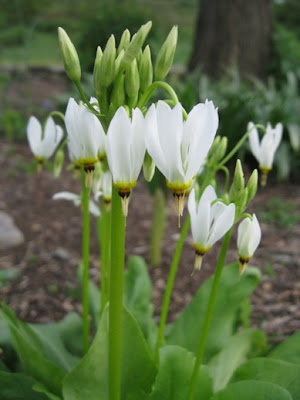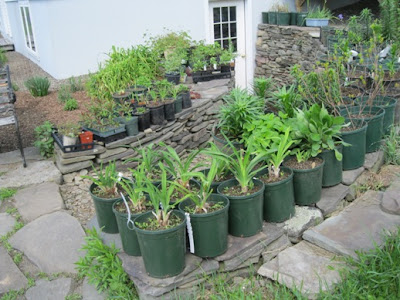This year it was May 4 when I saw the first red admiral on the stinging nettles. You can read about that here. Usually the stinging nettles are just beginning to come up later in May than that. In 2008 on May 18 the nettles were not very big. This year they were much bigger and it's a good thing. All of these butterfly eggs are hatching out into hungry caterpillars. By May 20 the top of the nettle plants had these curled up leaves. Peeking through the hole you can see a black caterpillar inside. That's a pretty nifty defense system to wrap yourself in a stinging leaf and eat at it from the inside
.
Now the caterpillars are out in the open. In fact most of the top leaves on the nettle plants are gone.
This Red Admiral caterpillar is still munching on the leaves. I have to wonder if the spines on the caterpillar carry a sting after it has eaten the chemical laden nettle leaves. You can see he's not alone.
I have to thank Ed for taking these great pictures. I would never have been willing to endure the burning sting of the nettles to get these great shots.
It's good we have a large patch of nettles. There are many caterpillars to feed.
This caterpillar is a ?. I'm not absolutely sure of the identification because the colors do not exactly match the Question Mark in my field guide, but since nettles is one of the food plants for the Question Mark butterfly, I think it's probably right.
I discovered that stinging nettles plants can be purchased at Richters. That would be a less painful way to acquire them than wading through the tall grass in moist areas waiting for that burning sensation to let you know your search had ended. We wait with great anticipation for the new butterflies to come. One of my biggest garden thrills is to watch butterflies in the garden. It won't be long now!


















































